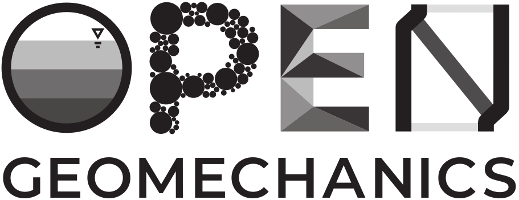Experimental and numerical investigation of the unclogging process within propped fractures using dynamic stimulation
Dynamic excitation of reservoir systems trapping hydrocarbons is a potentially promising solution for increasing the production. At the laboratory scale, it was found that a vibration of the fluid pressure could induce an increase in permeability of fractures. We developed in a previous study experiments aimed at reproducing clogging in propped fractures and unclogging due to dynamic loads applied perpendicularly to the fracture [Fawaz et al. 2021]. This paper built on this experimental set-up and presents first a study of the major parameters governing the unclogging of propped fractures by dynamic stimulation. The influences of the quantity of fine particles clogging the fracture, amplitude and frequency of the signal are investigated at constant proppant density. Then, a prototype computational model based on coupled DEM and finite volume method is developed. An original formulation of the evolution of apparent permeability of the fracture due to the presence and motion of solid particles in each finite volume cell is presented. Computations are consistent with experiments, although axial fluid flow is modelled instead of radial flow in the experiments. Results show that the increase of fracture conductivity is strongly related to the movement of proppant which helps at releasing and destabilizing fines clusters.




